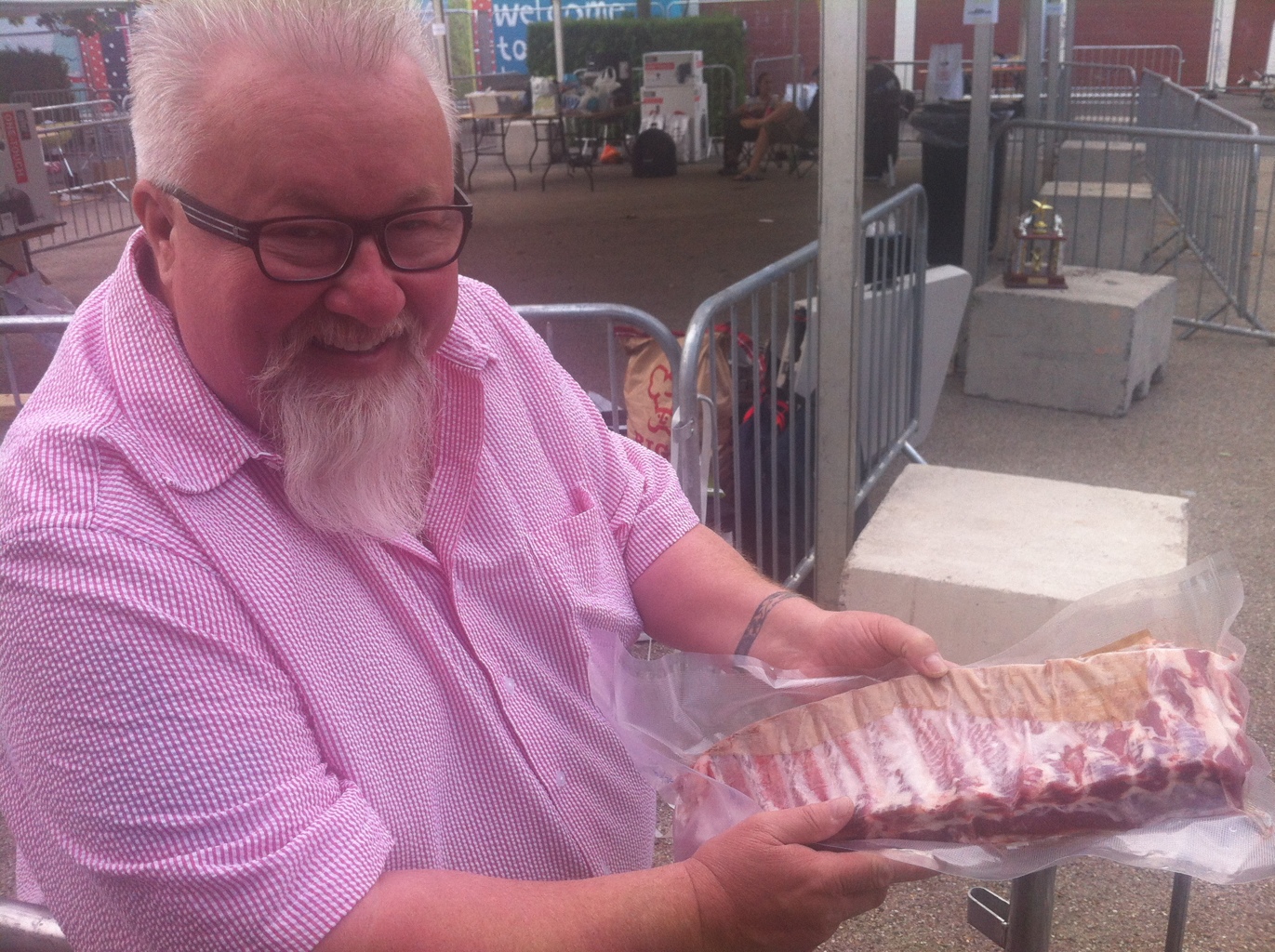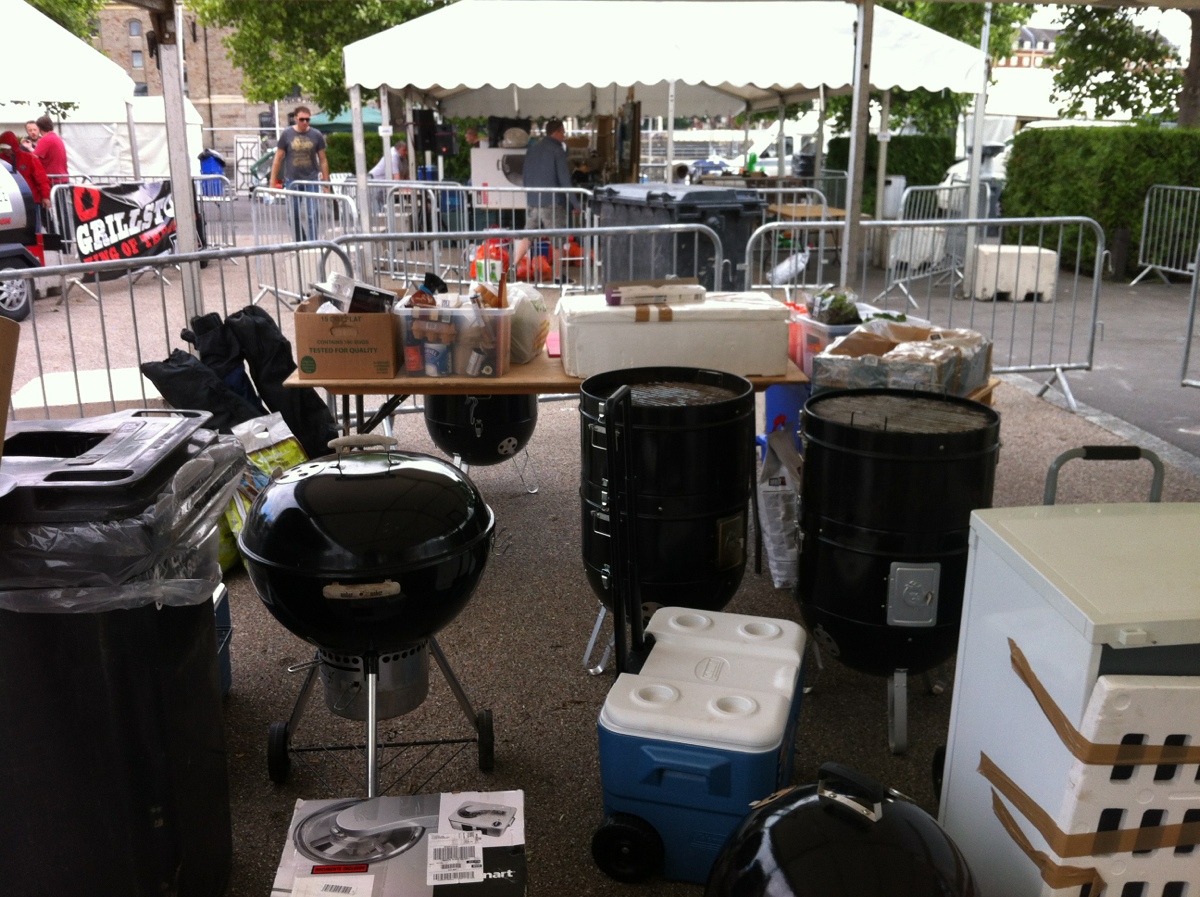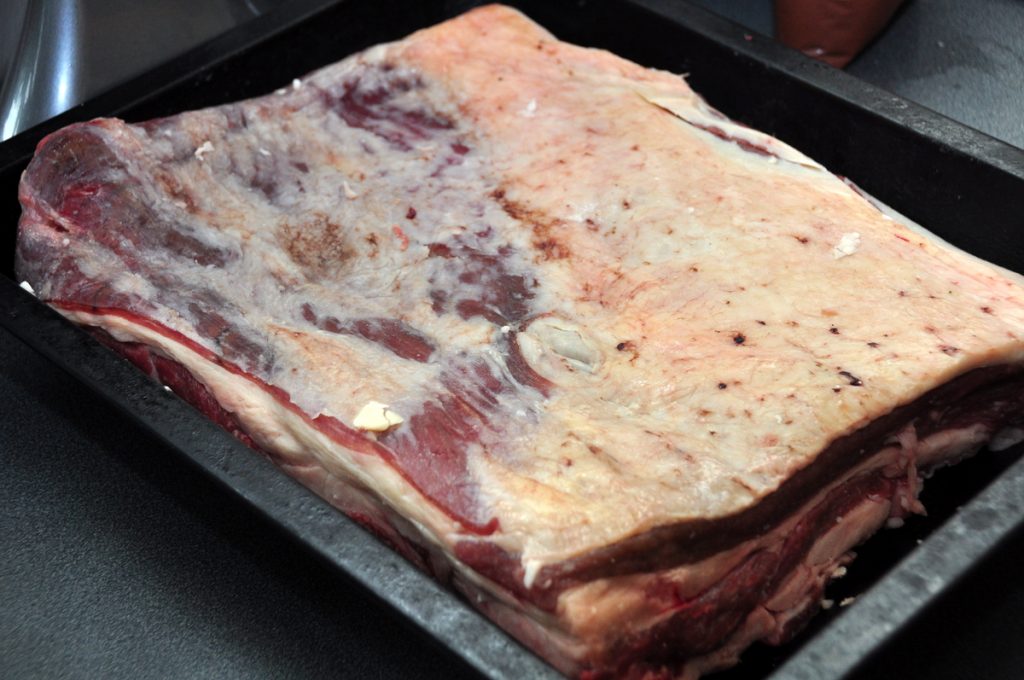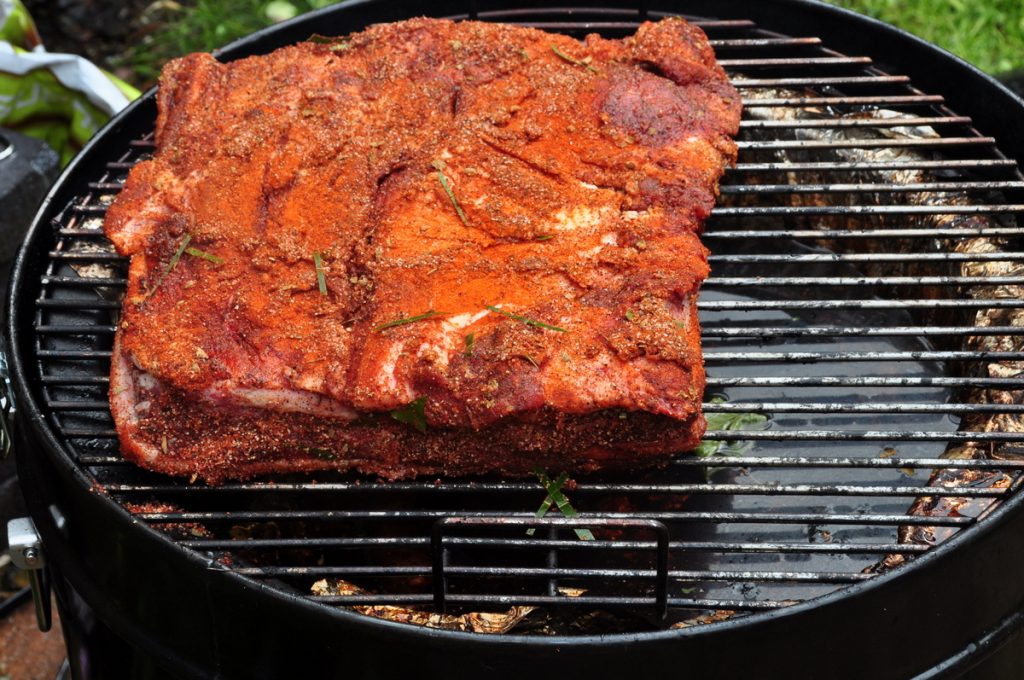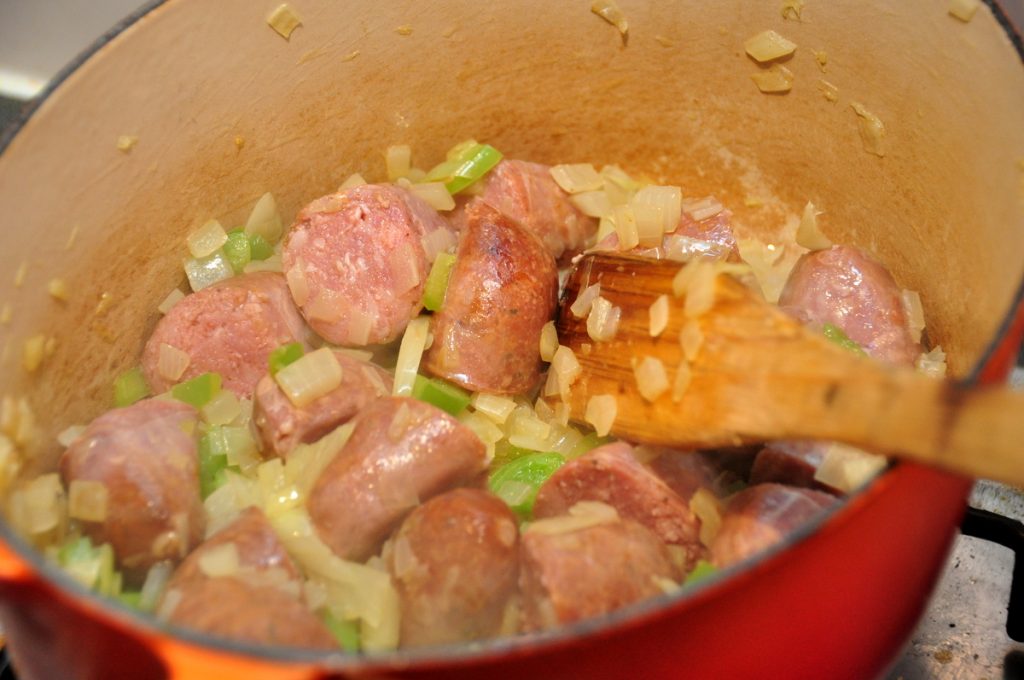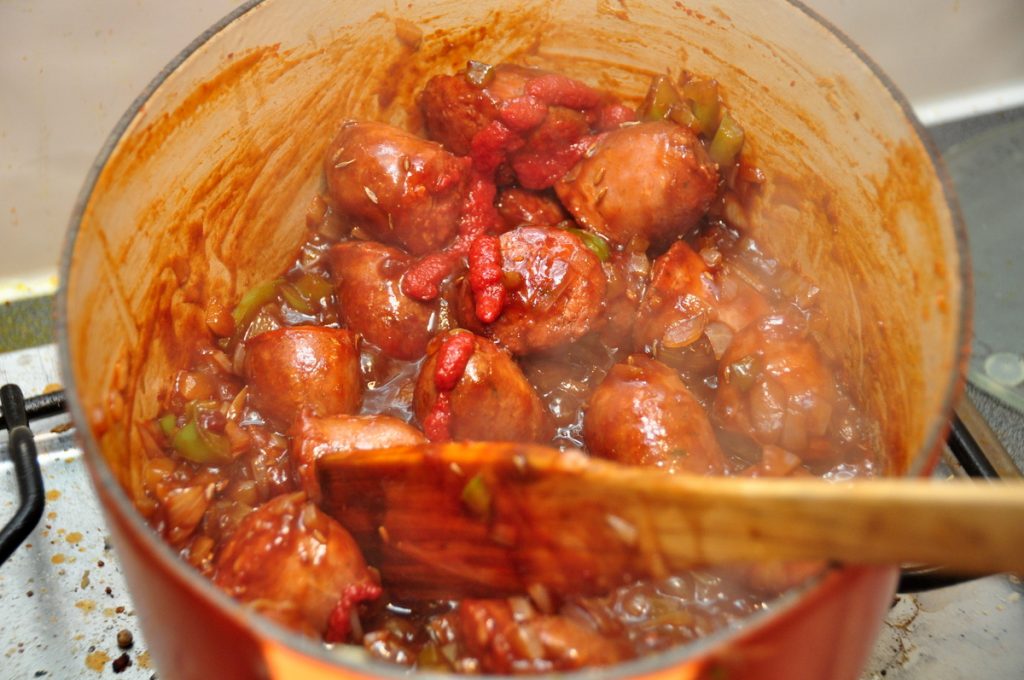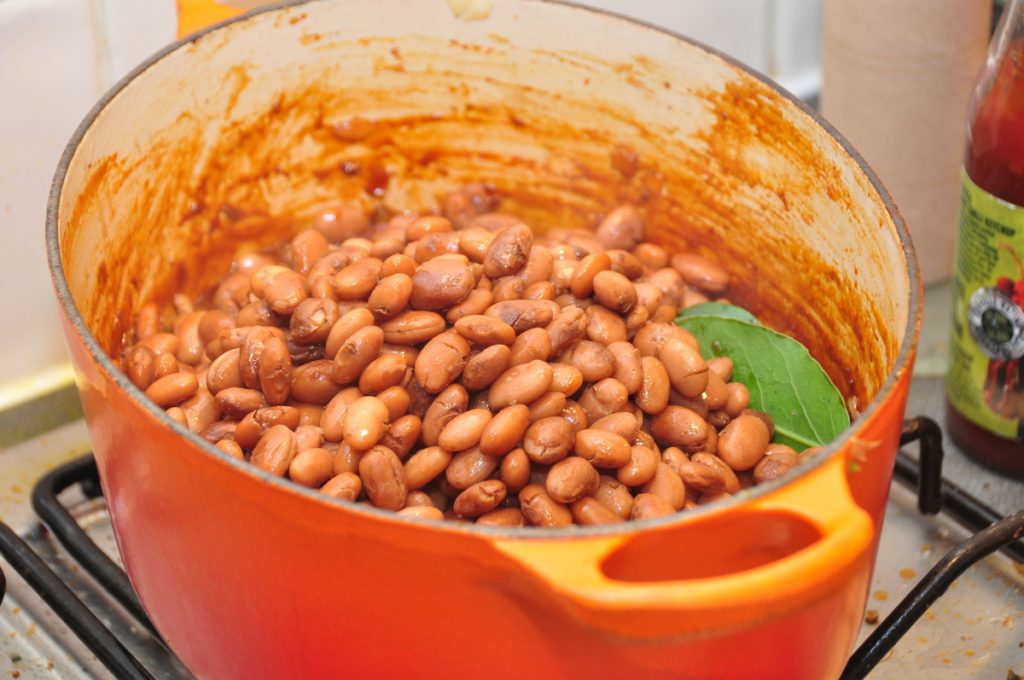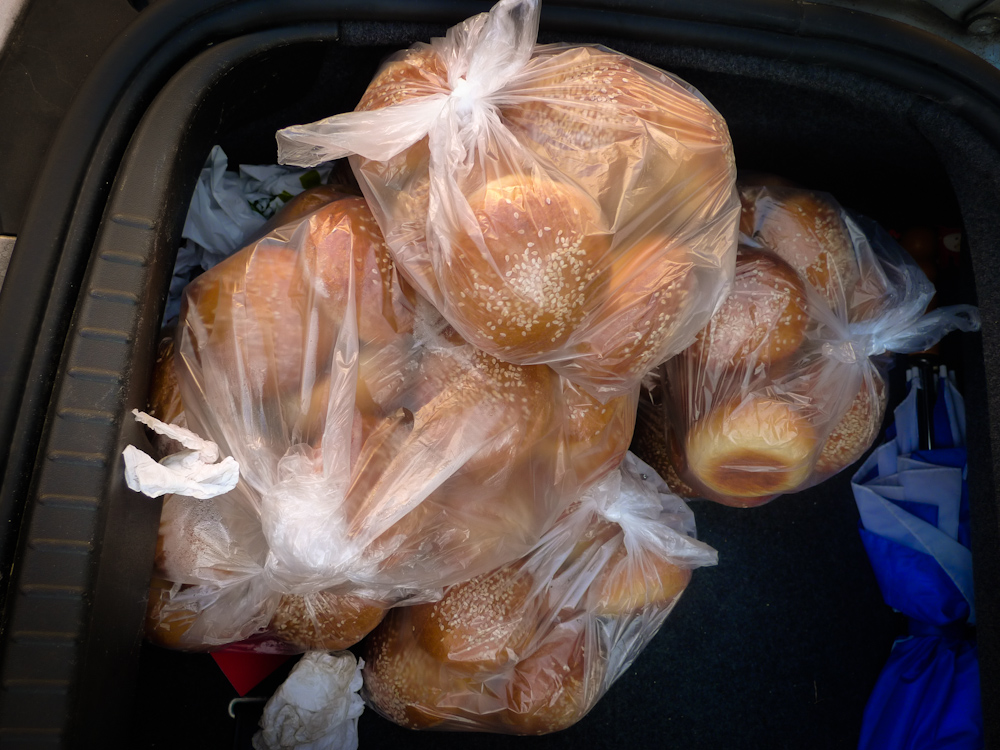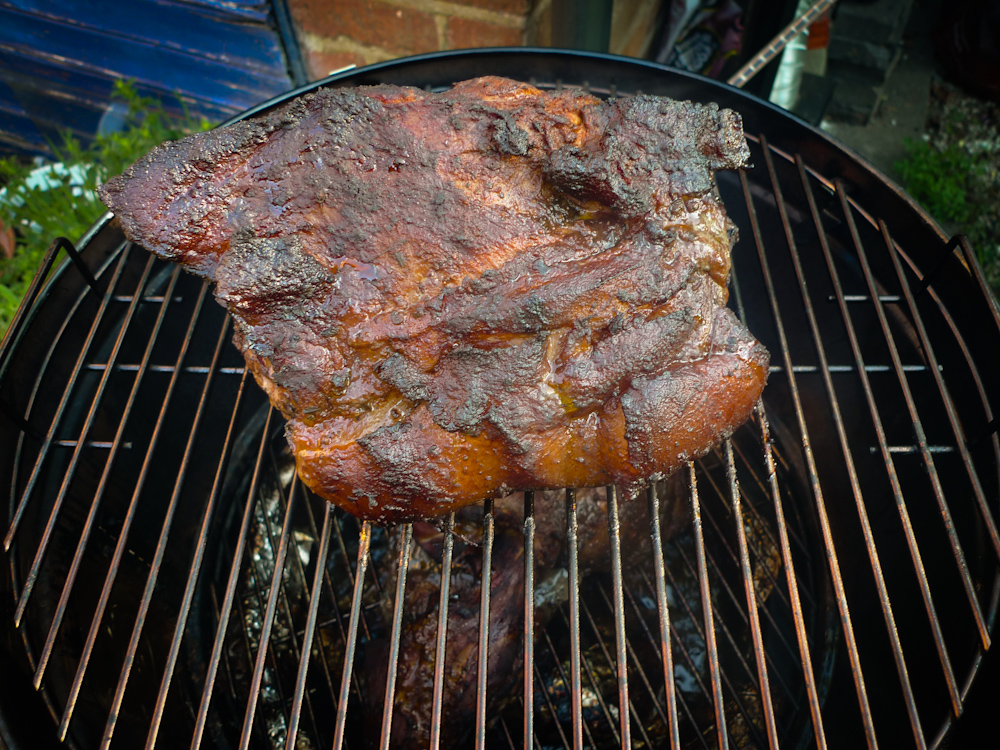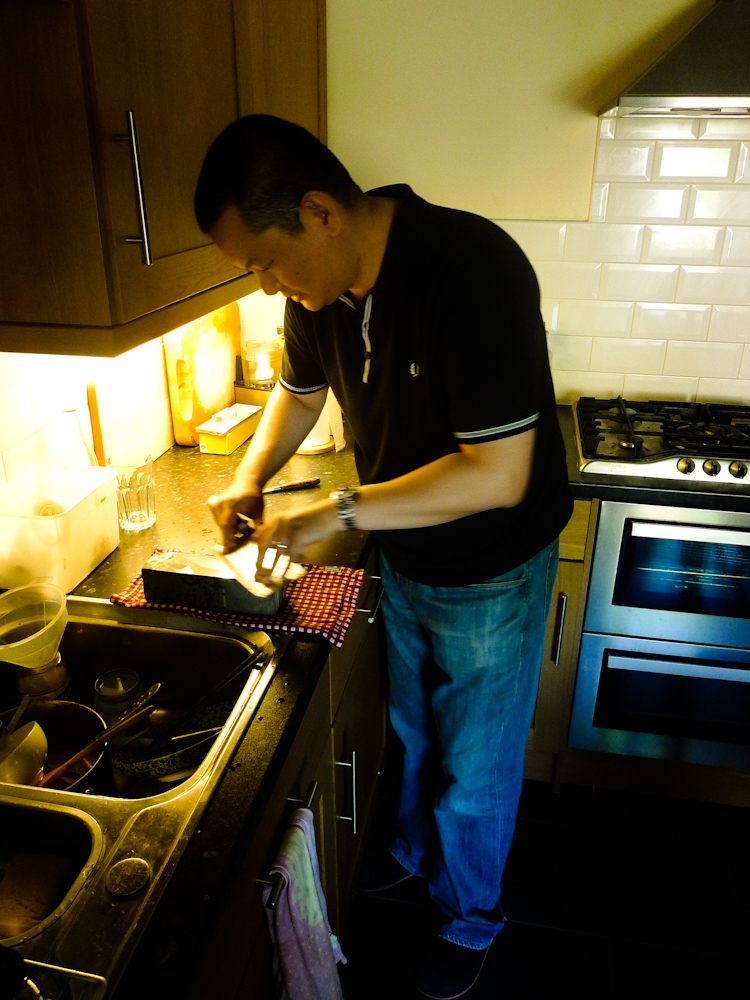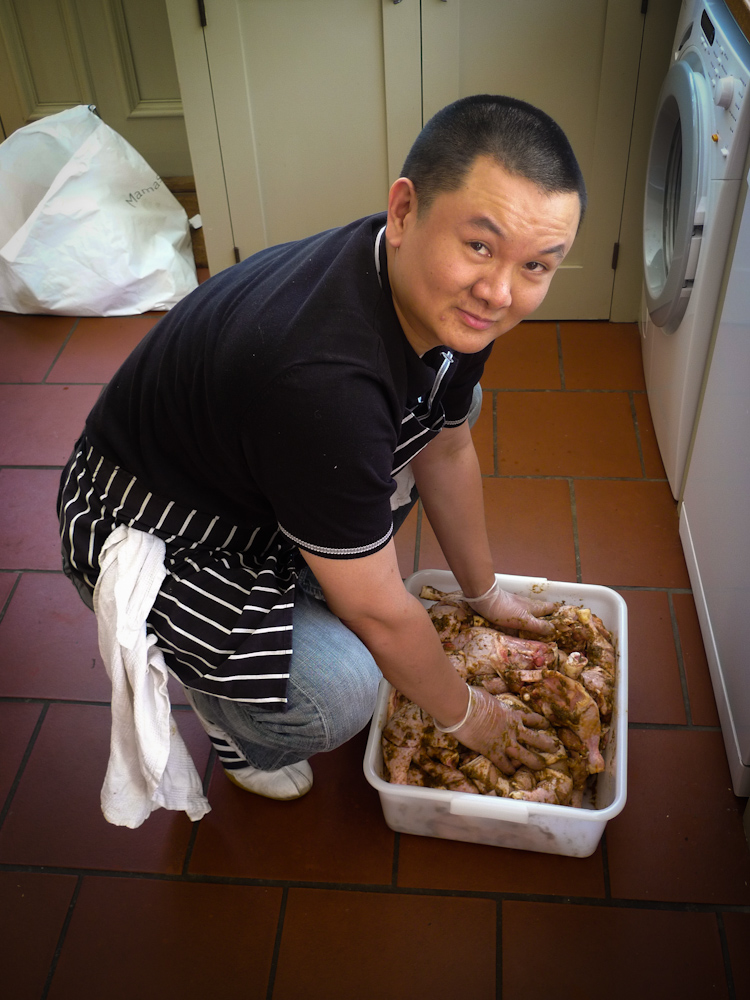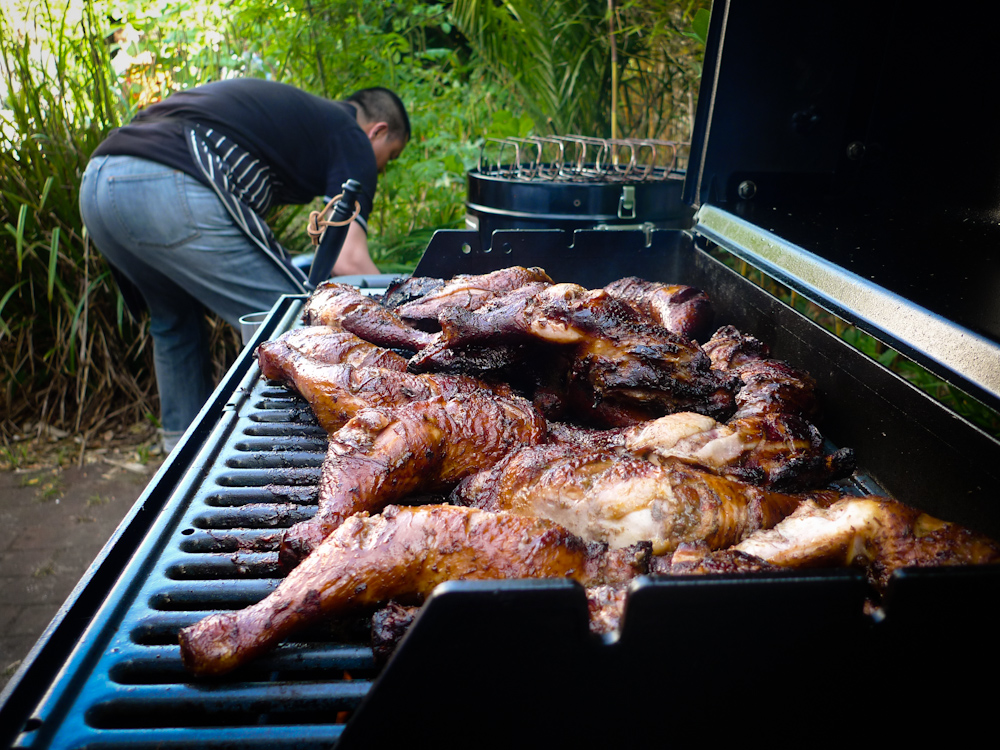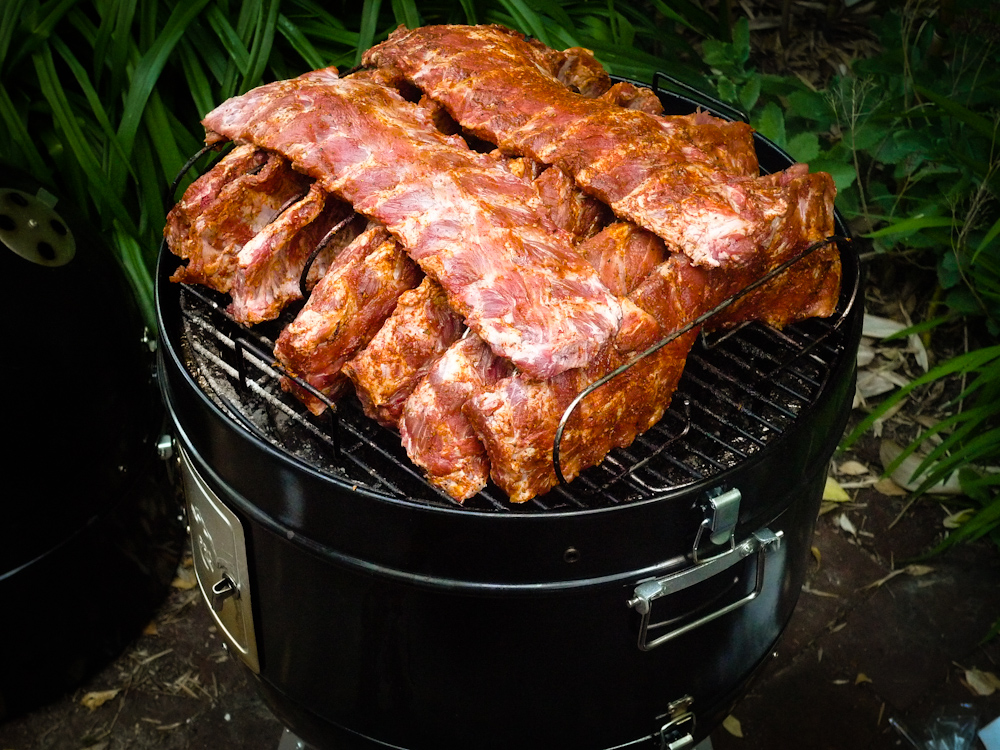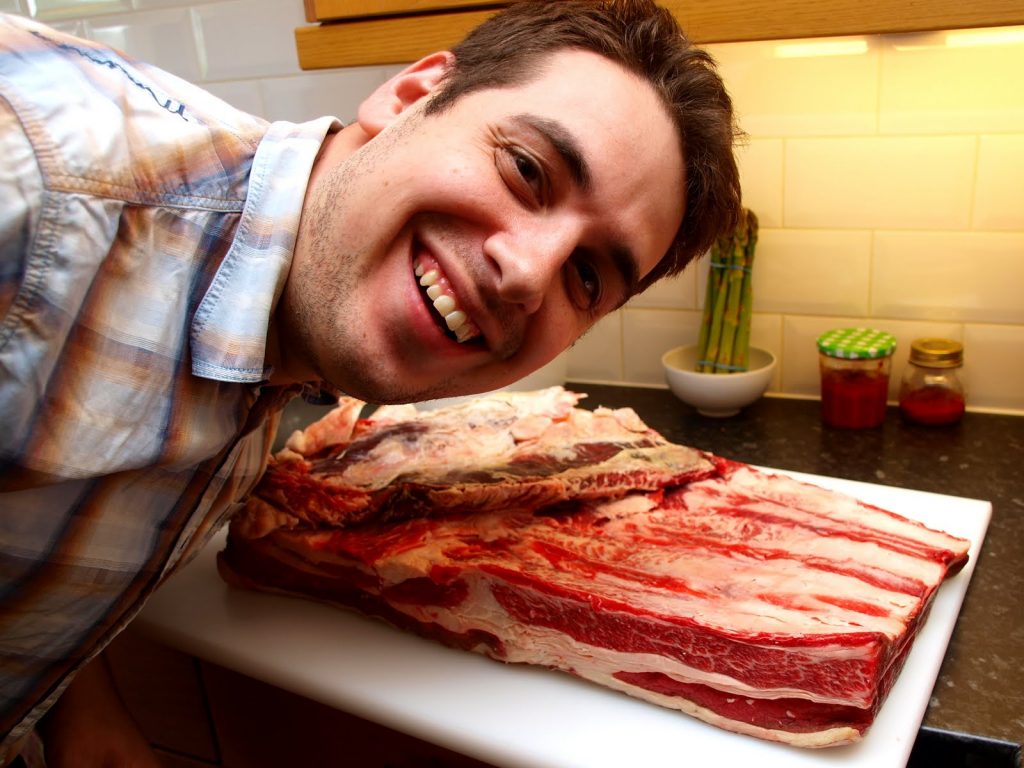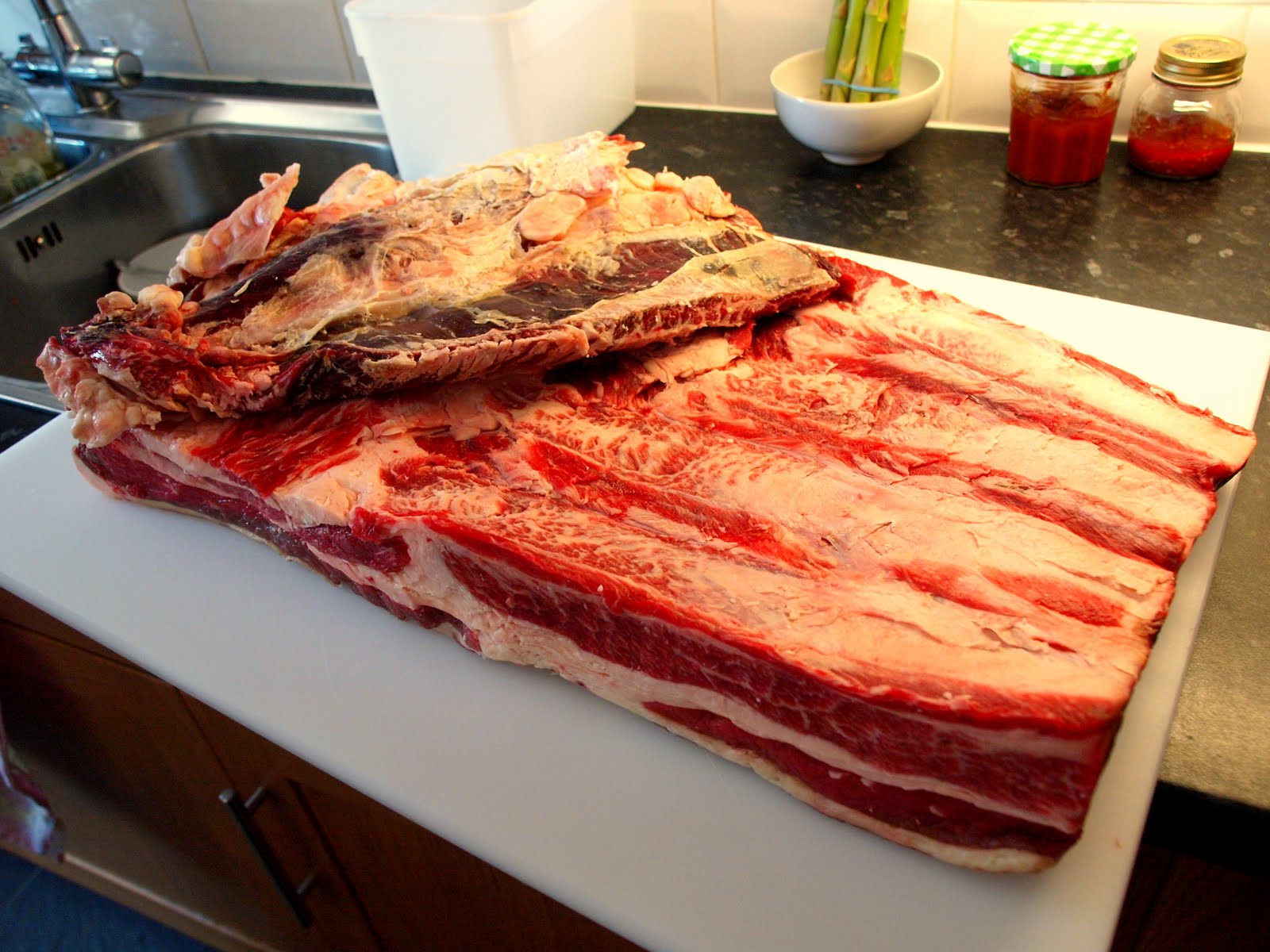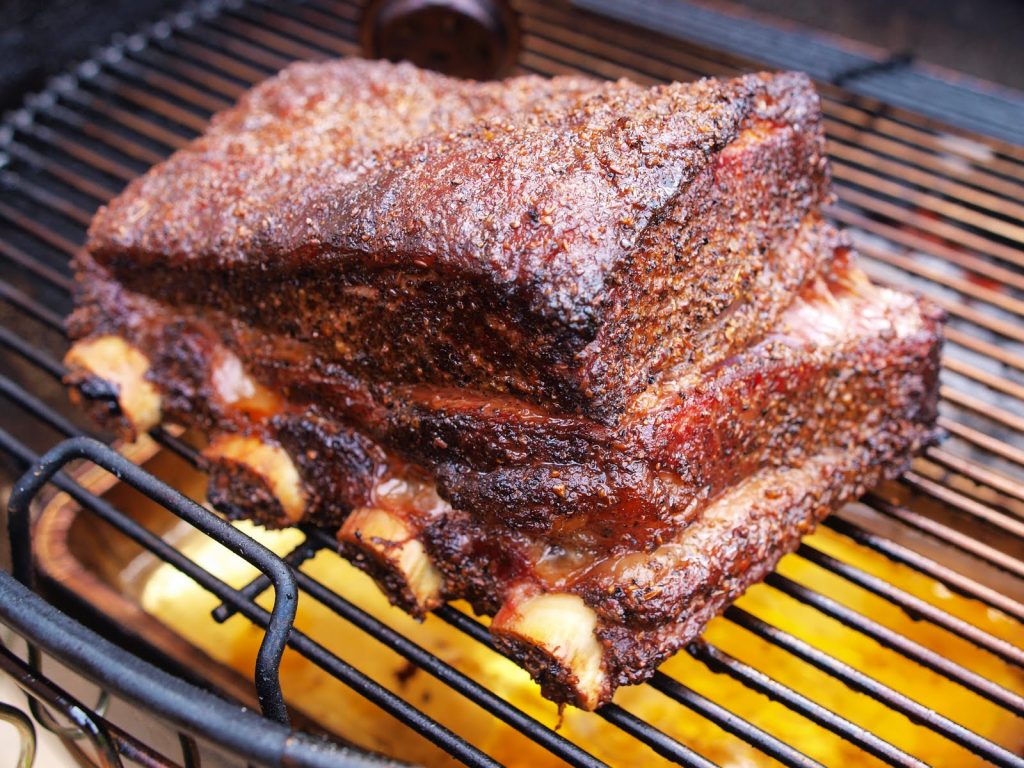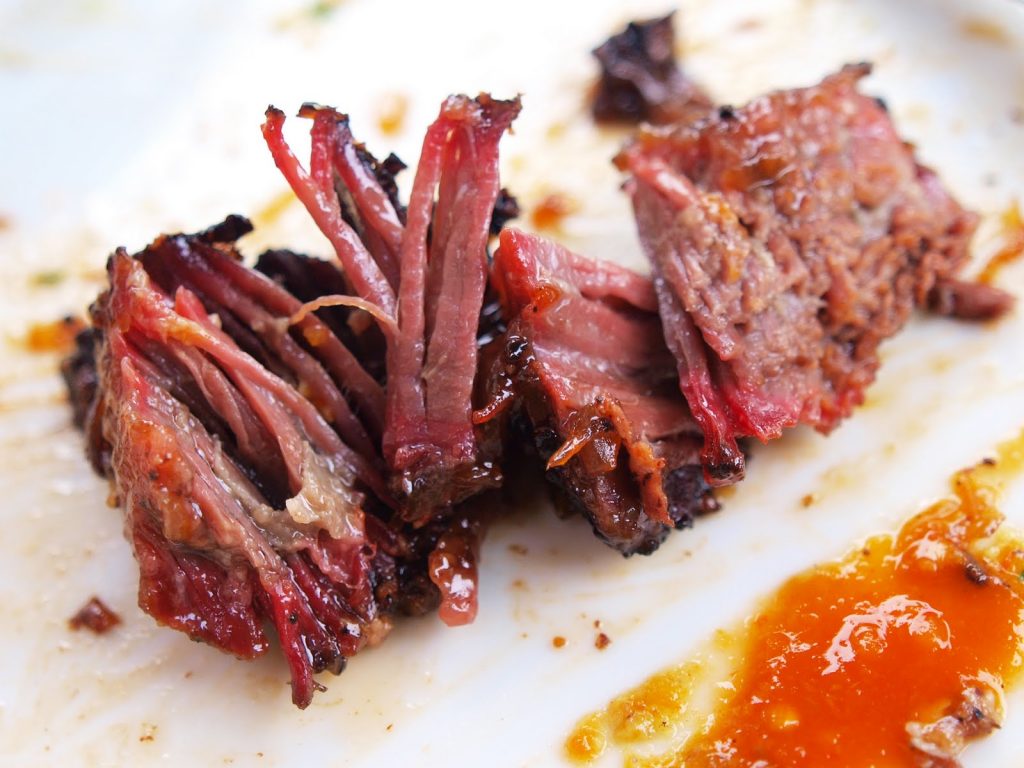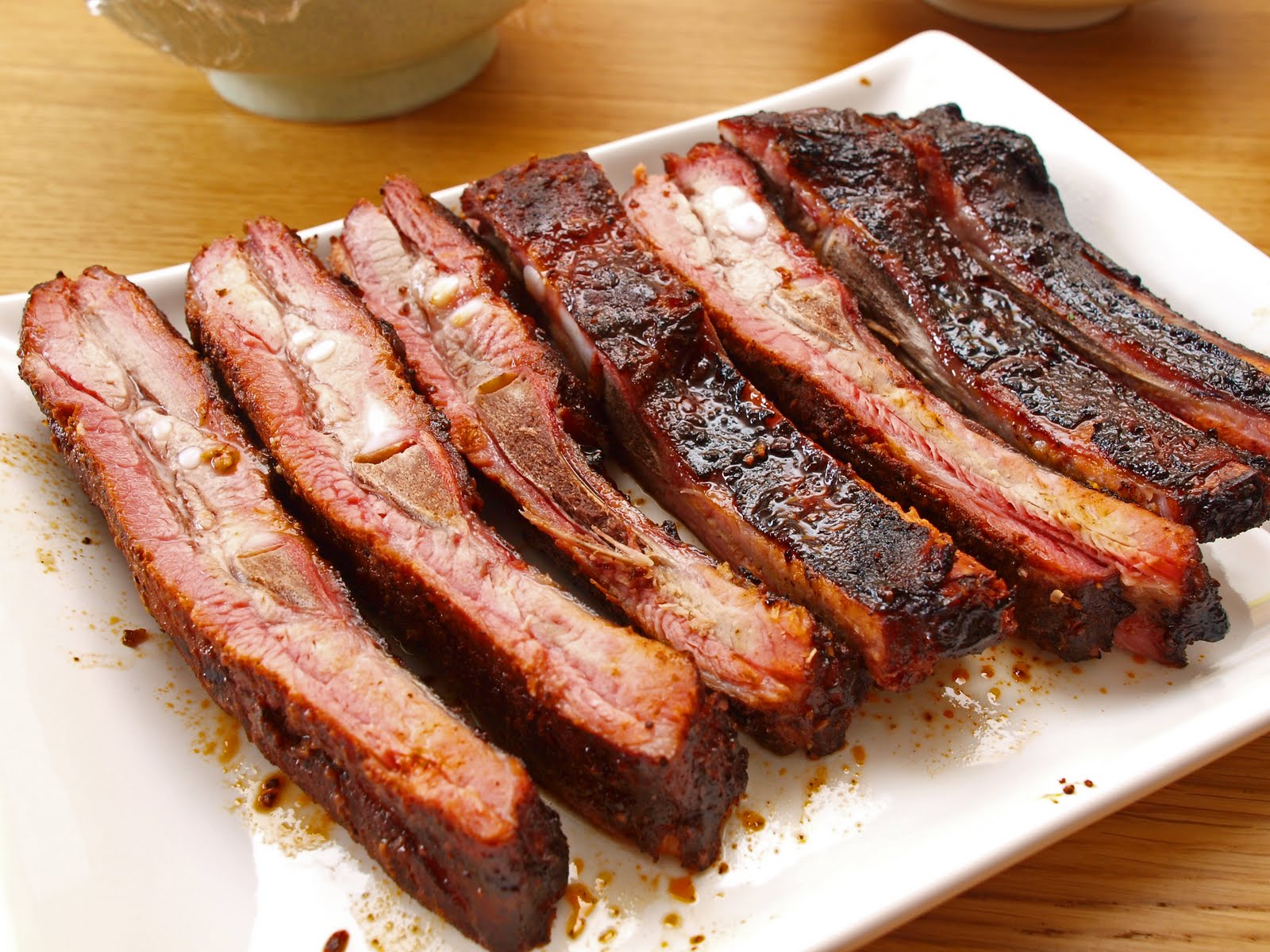Our meat has just been inspected by the legendary Ray ‘DrBBQ’ Lampe and has been declared fit for competition use!
Grillstock: setting up!
Grillstock: Brisket n’ beans practice
A few questions I want to answer with today’s practice:
- how does brisket cooked without the “Texas crutch” compare with foiled brisket?
- can I cook a 3kg brisket in under 10 hours this way?
- how does Lap’s smoked andouille work with beans?
- does adding coffee to the rub improve it?
Beans:
280g pinto beans, soaked overnight
1 large onion
1/2 green pepper
andouille links
tomato paste
molasses sugar
worcestershire sauce
chipotle ketchup
beef stock
cumin (whole)
cinnamon (ground)
So my killer, secret ingredient here is Lap’s smoked andouille links … and it’s only a secret because he won’t tell me the recipe! I got some chipotle ketchup from Man-food.co.uk and bunged in a load for heat.
Brisket:
3.1kg- very fatty
Rub:
paprika
brown sugar
salt
bay
fresh garlic
coffee
cayenne pepper
injection:
apple & pear
worcestershire sauce
salt
white sugar
| 9am | – | fridge | 100% |
| 11am | 200 | 145 | 100% |
| 11.30am | 240 | – | 100% |
| 12.15am | 250 | – | 50% |
| 13.30 | 235 | 160 | 90% |
| 14.00 | 225 | 169 | 100% |
| 15.00 | 240 | 170 | 100% |
| 17.50 | 260 | 180 (thickest) 200 (thin) | 80% – opened |
| 18.20 | 260 | 195 (foiled) |
#MEATTHROB2012: BBQ for 80 peeps
This weekend, as part of our intense Grillstock practice regime we set ourselves a slightly different task – mass-catering.
We decided to serve a diverse menu which would all be (relatively) straight-forward to serve to such a large number of people. Although this did require a fair amount of prior preparation – the spare ribs were smoked the day before, and the pork shoulder was smoked overnight.
The menu was:
- grilled chorizo
- asparagus with rapeseed oil mayo
- smoked jerk chicken
- pulled pork sliders with coleslaw
- meaty ribs
- baby back ribs
Grillstock Timed Practice 1: Pulled Pork and Brisket
Grillstock is only seven weekends away … eeek! So we need to start practicing our competition dishes; brisket, ribs, pork shoulder and chicken. However, unlike regular barbecue – “it’s done when it’s done” – it’s now imperative we keep half an eye on the clock. The dishes must be turned in at a particular time. If you don’t turn in, you can kiss your chances of winning goodbye!
But you can’t start cooking too early. The Grillstock rules demand that the meat cannot be touched until 5pm on the Friday before. No cheeky marinading, curing or brining. That’s fine, but it means you only until Saturday at 5pm to achieve the perfect brisket, from a standing start.
Is 24 hours enough time? It’s tight. Some changes need to be made to the usual routine. Usually you’d apply a dry rub, perhaps even after an initial brine. The dry rub would be left overnight at a minimum. But more crucially for brisket to be perfect it needs to be slowly smoked to a high temperature, much higher than ribs or pork shoulder, to around 190-200F in order to encourage most of the collagen to turn to gelatin. This is probably a 12 hour task for a large piece of hard-working meat like this.
We’ve decided to start smoking overnight. So that means the dry rub step needs to be curtailed.
7pm
Tonight I will start prepping a brisket and pork shoulder, smoke them both overnight and serve them to friends tomorrow afternoon … follow this blog for live updates 🙂 Just got to go have dinner first …
8:50pm
Ten to nine! And I’ve still got to tidy the bloody kitchen before I can get started…
9pm
Let’s get this show on the road. I’m doing two meats tonight; pulled pork and brisket. Lap already butchered me a pork shoulder, think it might be Tamworth. One half gives the”picnic ham”, pictured. The other half would be the “Boston butt”. Both are great for pulling because this cut has plenty of nice tough connective tissue. This gets rendered into melty gelatin through the cooking, allowing it to be shredded by hand.
Plus I’ve got some brisket – this is from a Hereford breed and has some vital marbling and a good layer of fat to help keep it moist after the long cooking has extracted much of its water content. It’s a bit of a funny cut, I think it’s from kind of half way up the flat end.
For the dry rub: I favour a simple dry rub for pork consisting of paprika, salt, celery salt, pepper (lots of pepper), cayenne pepper and brown sugar. For the brisket we get a bit more fancy, adding oregano, bay leaf and garlic powder. Rub it in by hand and then cover tightly in cling film whilst we get the fire going.
10pm
This is only the second outing of my new smoker, a ProQ Excel 20. This is a water smoker, like the Weber Smokey Mountain. But it’s a little cheaper, it’s got an extra stacker and more capacity, as well as eyelets to put your thermometer to monitor the temperature. And most importantly, it’s British! It’s quite a beast really. You can stack up to three rings which gives it a huge capacity. I’ll only need two rings for my two bits of meat.
It’s quite important to foil the water container because otherwise, as I found out, all the fat and drippings burn and it’s a devil to clean (so says Hannah anyway ;)). I’m putting some boiling water in to help bring it to temperature quickly, plus some (cleaned) gravel to act as a heat reservoir when the water has boiled away.
I’m going to use more wood chunks this time as last time the food came out slightly undersmoked. I’ve got some nice big wood chunks that I bought from Goulden’s BBQ Smoking Woods. I’m going to use some oak and some cherry, and maybe a bit of hickory too. I like a mixture. For fuel we’re using Cocoshell briquettes which burn quite long and importantly don’t have any horrible additives which might taint your food.
Because I’m smoking overnight and don’t want to have to get up to light more coals, I’m using Jim Minion’s method which involves filling the smoker with unlit briquettes which should slowly ignite as the night wears on.
10:30pm
Just need the smoker to get to temperature, say about 200F so I can close down the vents and leave it to smoke overnight.
11:00pm
Smoker hit 200F. I’ve closed down all the vents to about 1/8 because I figure I want a long, slow burn and I’d much rather temps sitting on the low side than too high. And I’m tired and I want to go to bed 🙂 Let’s pick this up again tomorrow!
07:00am – the next day
After eight hours sleep, well more like four thanks to the efforts of a very wriggly baby last night, I awoke to a beautiful new morning! So what happened overnight? The temp on the ProQ was 175F which is promising, and the coals were still burning .. but what do we have inside?
Looking good! Pork probed at around 170F and the beef at around 165F. Pork can go in foil and be left for later. But more work to be done on the brisket .. time to build another fire!
08:00
I’m sluggish at this time of the morning. After a fortifying coffee I’ve summoned the strength to foil both pieces of meat and added a bunch more coals to the ProQ. The aim now is to get the smoker to about 250F, in order to persuade the meat to hit 190-195F and convert more collagen to gelatin. Foiling the meat will help hit the higher temperature quickly (not that I’m particularly in a hurry, I’ve got eight hours left until serving!). I’m pretty happy with the level of smoke this time so there may not be any need for any more smoking. But I may want to finish the brisket on the grill to encourage more “burnt ends”.
10:45
Jeez, in this game you snooze, you lose. After bathing the baby (the actual baby, not the smoker) and putting some brioche dough on to rise I leisurely went back to check on the smoker. Still at 250F, this thing is rock solid. I tested the food temperature: the brisket had hit 195F with the skewer going through with virtually no resistance. The pork was around 190-195F and most of it was soft. Hopefully I haven’t over-cooked it. I remove the still foiled meats and place in a polystyrene insulated box where they will rest and keep warm until serving this afternoon.
12:50
Time to shape the brioche dough, just in time for the F1! I double up the Smitten Kitten recipe, but substitute the water for full-fat milk to try and encourage a soft crumb. The idea is to make little buns for pulled pork sliders.
14:30
Fresh out of the oven, the buns are good! People will start arriving in an hour or so.
16:30
Time to unfoil the pork and pull it! First impressions are good – the bone slips clean out, and there’s a decent bark and smoke ring.
After shredding by hand, it gets doused with a North Carolina-style vinegar sauce; cider vinegar, brown sugar, salt, Frank’s sauce, cayenne pepper and black pepper.
Here they are, served! The brioche buns are a nice touch and the coleslaw just adds a bit of crunch. This is a very basic coleslaw recipe: equal parts cider vinegar and mayo, mustard seeds and salt.
Verdict: These were great! Pork had good smoke, good flavour, good colour. But being self-critical it could have been a touch moister, probably could have done with more fat mixed in. The meat would probably have benefitted from a brine or injection cure also. So next time we’ll find a shoulder with even more fat, perhaps look into a fatter breed like Old Spot.
19:00
The brisket is finished on the grill to encourage some burnt end formation. It’s very very tender — too soft for competition probably, but great bark and smoke flavour. I’m really impressed with the ProQ! The interior is underseasoned – it probably needed an application of the seasoned cooking juices, or again perhaps an injection cure. Or just do what we did and put some Maldon salt on the sliced pieces. Bloody nice though, someone remarked (it might have been me) that you could have rubbed it into your skin as a kind of beef moisturiser.
Conclusion
Well we had a very good time tasting all the meats today. Lots of positives – the smoker seems to be behaving nicely and I’m not worried about getting it all done to time as the overnight smoke does the business. But there’s still some work to be done on presentation and getting the interior seasoning bang-on. And timing on the brisket is still an issue. Foiling is great because it really speeds up the last part of the cook, but it also means you can overcook very easily. It may be that we can dispense with the foil stage to allow that section to allow better control. But it’s potentially a risky strategy because undercooked briskets are a disaster, and no piece of meat behaves exactly the same.
In two weekends time we’ll try again, but this time for 80 people!
Now head over to Lap’s post to see how he fared with the ribs and chicken.

